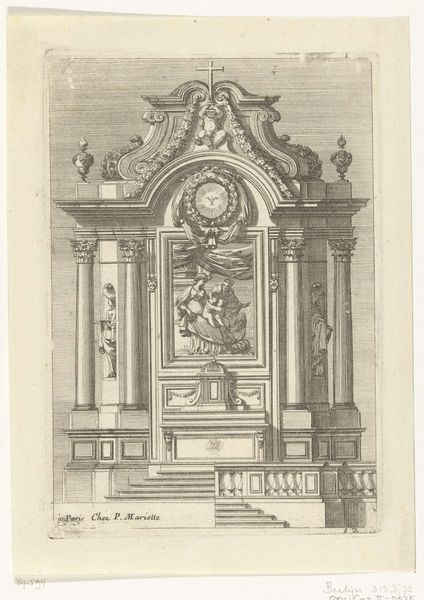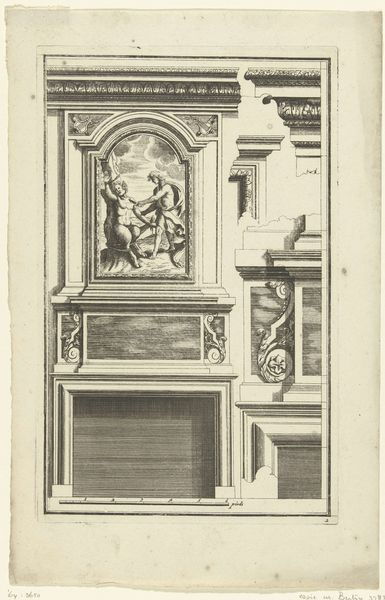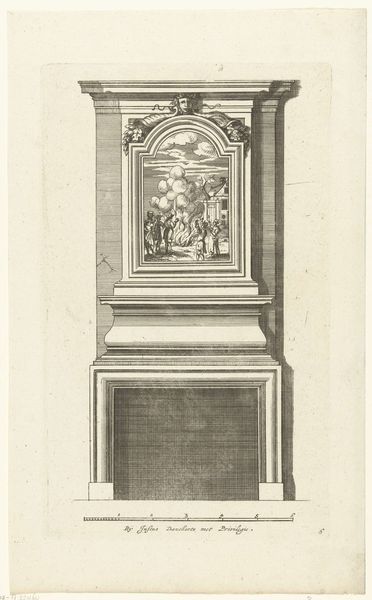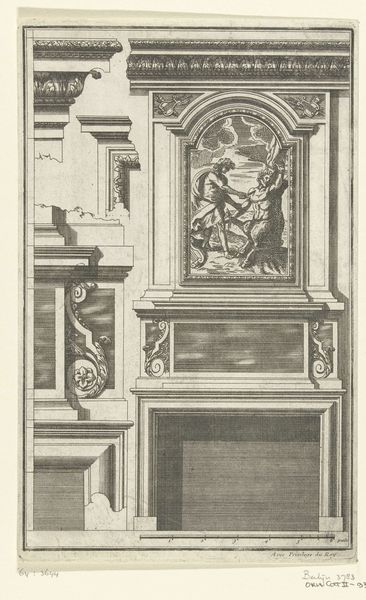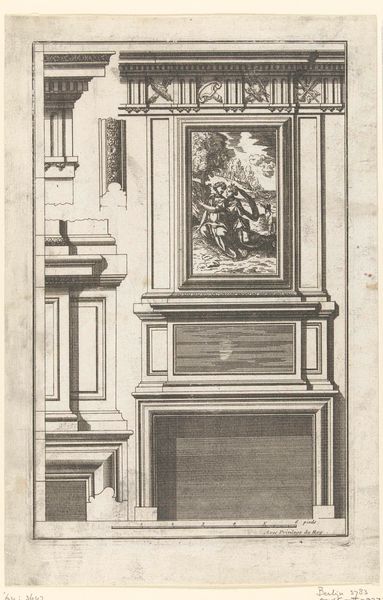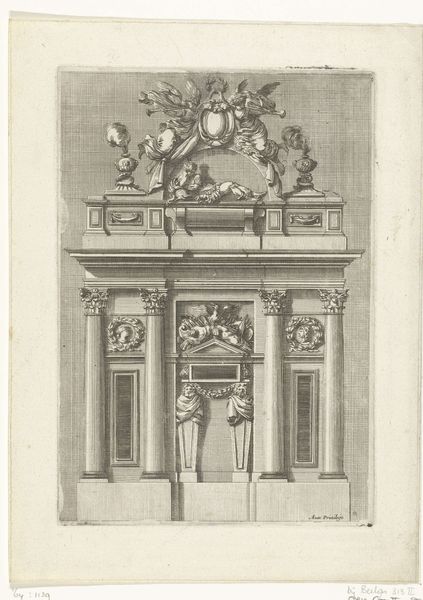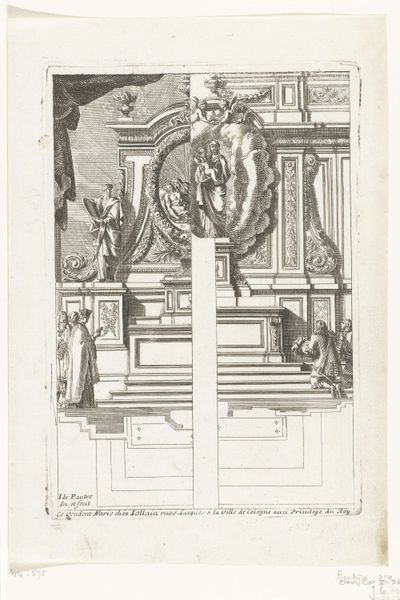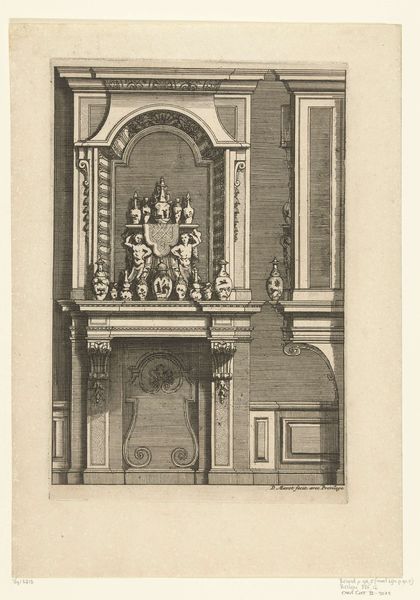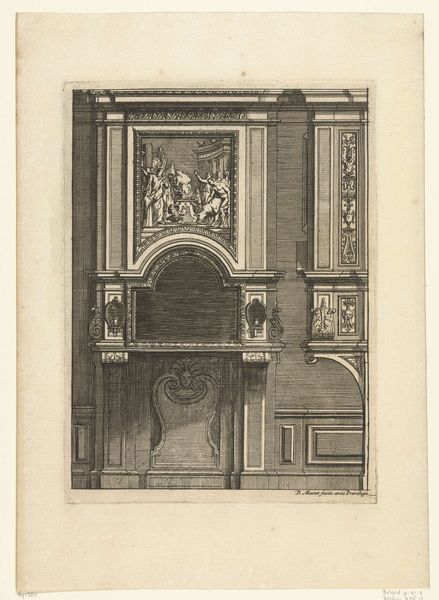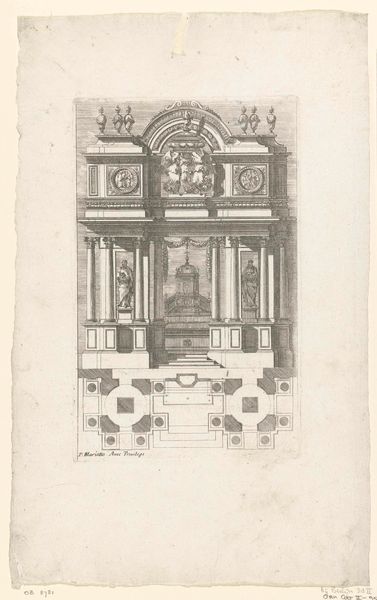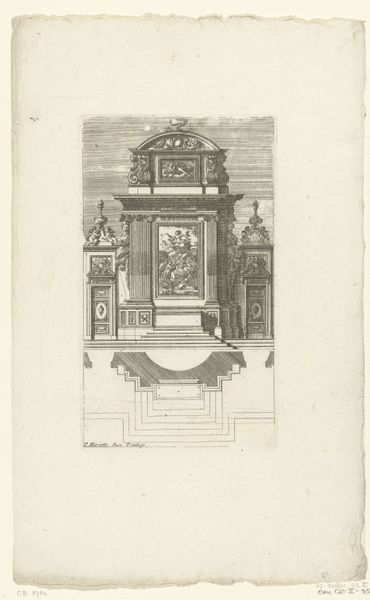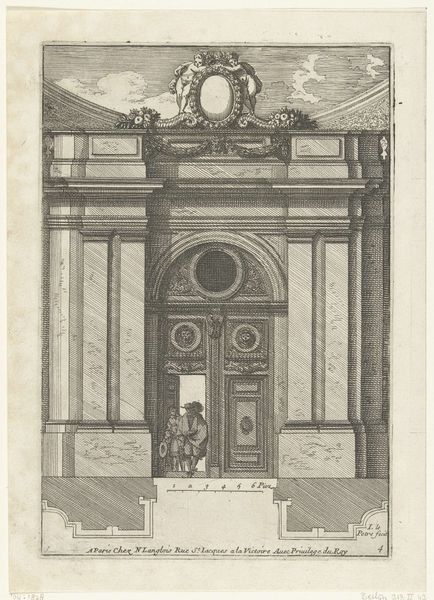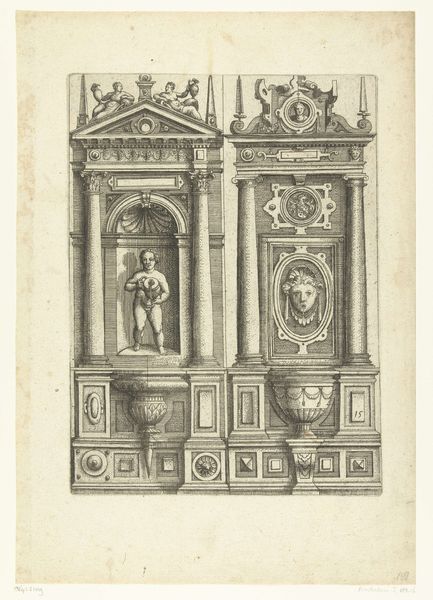
print, etching, intaglio, engraving, architecture
#
baroque
# print
#
etching
#
intaglio
#
etching
#
engraving
#
architecture
Dimensions: height 212 mm, width 145 mm
Copyright: Rijks Museum: Open Domain
Curator: This is Jean Lepautre's "Altaar," created in 1673. It's currently housed in the Rijksmuseum. This print, employing etching and engraving, showcases a design for an elaborate Baroque altar. Editor: My first impression is one of constructed grandeur, even rigidity. The strict symmetry, the imposing scale rendered in monochrome, all point to power. The Baroque can really project control, right? Curator: Absolutely. And within that control, consider the social function this piece was intended to fulfill. Religious architecture in this era wasn't simply about aesthetics, it was about communicating divine authority and the Church's influence in everyday life, and more directly about its capacity for control. Lepautre created designs for many kinds of ornamentation and interior architecture. Editor: I am drawn to the medium here; Lepautre, through engraving, is literally impressing a design for opulence. We should consider the relationship between this mass-produced print and the unique, often hand-made experience of devotional objects. Who was its intended consumer, and where would it be seen? The lines appear almost mechanistic. Curator: Well, dissemination is key. Prints allowed for architectural ideas, even utopian ones, to reach wider audiences, influencing taste and aspirations even for those who couldn't commission such grand designs. There's a democratizing effect, ironically, within the celebration of elite power. Also, don't underestimate how printmaking itself shaped labor and craftsmanship. Editor: The very labor of its creation mirrors, on a vastly different material scale, the artisanal work that the image depicts: one engraver working from the design of another artisan's design, mimicking monumental works. Consider the value added—a luxury item. But is that value retained in the image here, reproduced as it is through ink and printed on paper? Curator: That contrast you're highlighting, between the promise of monumentality and the reality of print, I think that tension gets to a core paradox of the era: the simultaneous embrace of opulent display and emerging possibilities for wider accessibility through technological innovation. Editor: Ultimately, this piece reveals the social relationships inherent in the very act of design and dissemination in the 17th century. The print object speaks volumes. Curator: Yes, it's a tangible echo of complex societal aspirations, isn't it?
Comments
No comments
Be the first to comment and join the conversation on the ultimate creative platform.
